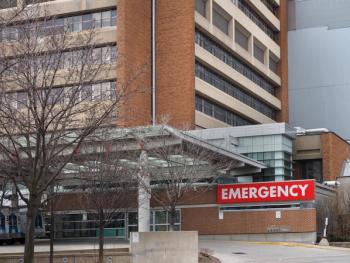
Hospitals have laid off thousands since June
Facing mounting costs and uncertainty in federal funding, several health systems across the country have cut the size of their workforce recently.
Thousands of employees at hospitals and health systems have lost jobs in recent months.
Several health systems have announced layoffs since the beginning of June. Some point to mounting financial pressures, or the impact of grant terminations from the National Institutes of Health, the prime source of federal research funds.
Others cite uncertainty in federal funding, and health systems have warned that
Hospitals and health systems have had only modest operating margins in 2025, according to
Providence, Adventist Health, Banner Health, Children’s Hospital Los Angeles, among others, have all announced staff reductions since June.
In June, Providence
Erik Wexler, president and CEO of Providence, told Chief Healthcare Executive® in
But he says the system is also evaluating all of its programs as it looks to be more efficient with looming Medicaid cuts and other cost pressures. Providence will also scale back some services in areas where necessary, and that will likely mean other reductions in the future.
When asked if Providence could reduce more staff in the future, he said, “Unfortunately, I think we will, as we continue to de-cannibalize programs.”
Vanderbilt University Medical Center said in June that
The medical center said the cuts are being made “in response to the impact of budgetary actions in Washington, DC related to government-sponsored research and patient care,”
UC San Diego announced the layoff of more than 200 staff in June,
Christine Alexander-Rager, MD, MetroHealth president and CEO, acknowledged that it’s a difficult time.
“We made these decisions in response to significant financial challenges facing our system,” she told staff in July. “Despite your hard work and steady growth in our volumes, MetroHealth’s expenses continue to outpace revenues. And that gap is growing.”
Children’s Hospital Los Angeles
The pediatric health system noted declining reimbursements from Medi-Cal, California’s Medicaid program, among mounting cost pressures. The system had already taken other steps before layoffs, including a hiring freeze and efforts to manage the costs of supplies.
Paul S. Viviano, CEO of Children’s Hospital Los Angeles, said in August that it was “a very difficult decision, and it is a deeply painful moment for our entire team.”
“It became increasingly clear that reductions to both team member and management roles were necessary to ensure CHLA can continue to survive in this uncertain climate to provide our young patients and their families with the quality care that they need and deserve,” Viviano said in a statement announcing the staff cuts.
Adventist Health, based in California, said in August that it would be laying off nearly 300 employees.
Banner Health in Colorado is planning to lay off 351 employees at Banner McKee Medical Center,
Banner is transitioning the Banner McKee Medical Center in Loveland to a specialty hospital. The transition of the medical center is slated to be done by Nov. 5.
Seattle Children’s announced in September that it was laying off over 150 workers, and that more than 350 open positions won’t be filled. The hospital said that most of the layoffs are in administrative roles,
Northern Light Health
Jay Reynolds, MD, senior vice president of Northern Light Health, said last month that the changes are part of a broader effort to strengthen the system. Northern Light also closed Inland Hospital in May.
“Hospitals and healthcare providers across Maine are facing a perfect storm, and these challenges are especially acute in rural areas, where small hospitals and clinics struggle to remain viable and meet the needs of our aging, remote populations,” Reynolds said.
UC Health in Cincinnati said in September that 50 staffers were losing jobs and a mobile stroke unit was being discontinued to reduce costs,
Kaiser Permanente said in early October that the system was laying off 216 workers,
Jefferson Health said it is laying off over 600 workers, or about 1% of its workforce. The staff reductions were announced Oct. 16.
















































